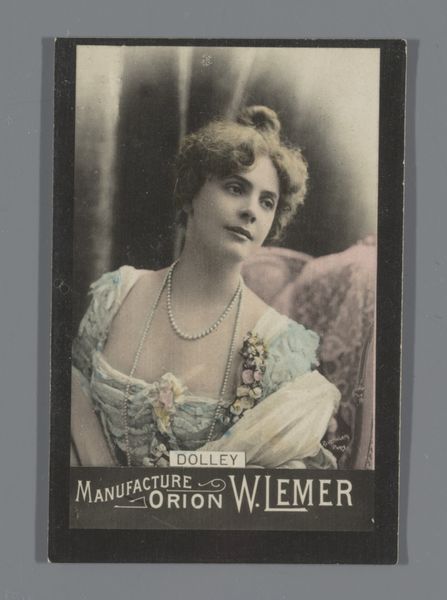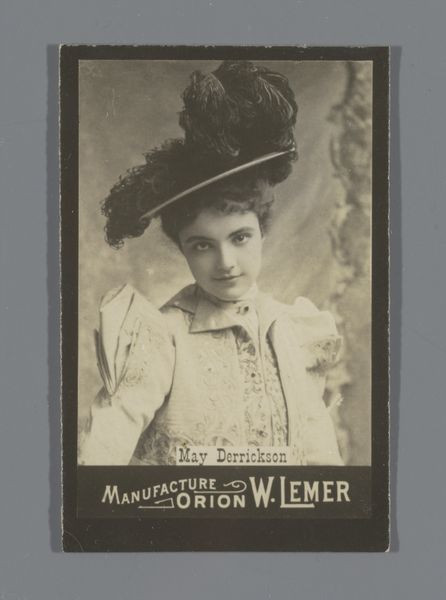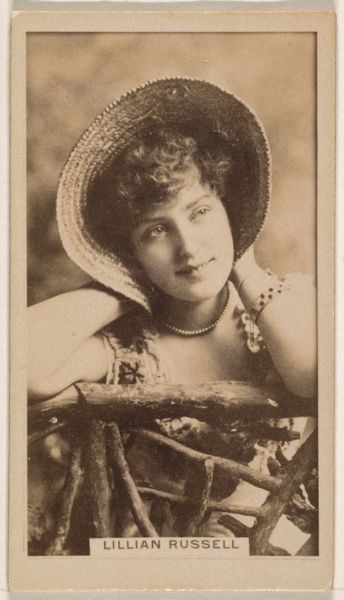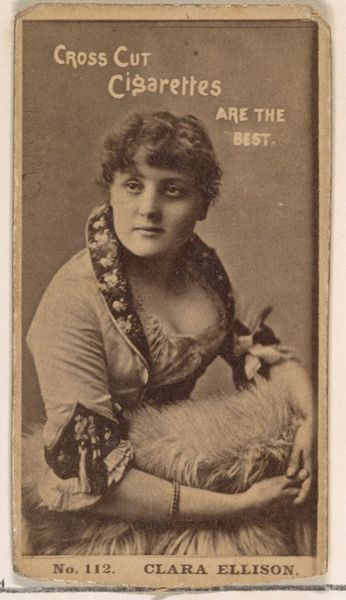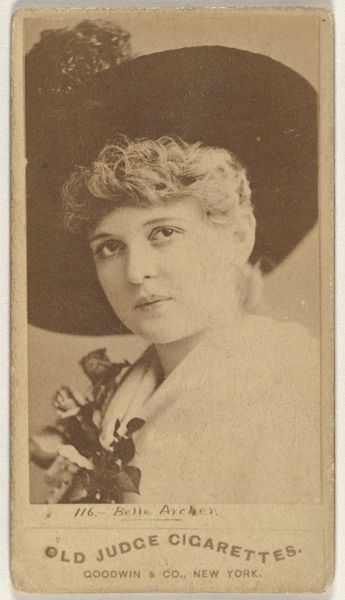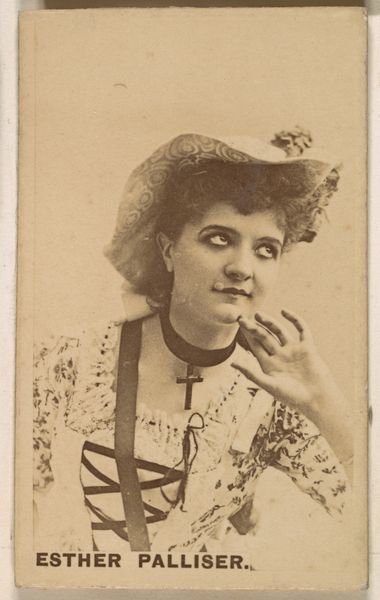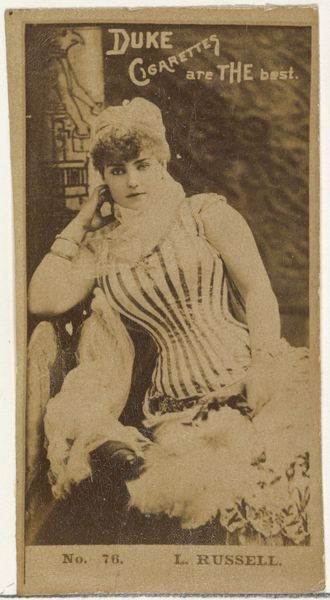
photography
#
portrait
#
self-portrait
#
photography
Dimensions: height 60 mm, width 38 mm
Copyright: Rijks Museum: Open Domain
Curator: Before us, we have a vintage photographic print entitled "Portret van Maud Francis, reclame voor Orion W. Lemer," dating approximately between 1895 and 1910. It presents itself as both a portrait and advertisement. Editor: There’s a striking theatrical quality to this photograph. The subject seems poised, almost as if caught mid-performance, even with the rather static nature of the pose. Curator: Indeed. Notice the composition; the frame is intimate, drawing the viewer's attention to her facial features. The light source casts gentle shadows that define her contours. The interplay of light and dark contributes significantly to the subject’s presentation, giving a certain gravitas. Editor: The implicit and explicit nature of such performative presentations bears a unique historic burden. We’re viewing this through a lens constructed from historical notions about gender and beauty. The artifice and promotion displayed invite questions about women's roles in the economy of that time. Curator: Certainly, but let's not overlook the meticulous detail achieved through photographic manipulation, which offers significant information on the photographer's skill. The subtle gradations of tone and sharpness work in tandem, enhancing the viewer’s focus on Maud Francis' features, effectively manipulating visual perception. Editor: Agreed, the skill is apparent, but for what aim? Is it art for art’s sake or the art of marketing subjugated to industry and advertising, and the implicit creation and reinforcement of potentially dangerous stereotypes? Consider also that a photograph in those times was likely costly to produce. What class dynamics were involved to immortalize such imagery, especially as related to commodity sales? Curator: These vintage techniques—they hold the promise of future avant-garde approaches to portraiture through lighting and composition. It transcends being merely an advertisement and becomes a sophisticated interplay of technique and representation. Editor: I still consider the historical backdrop that adds substantial depth to such portraits and, indeed, to these very early commercial visual tactics. Understanding these details, in fact, enhances its value as an intersectional site, and, perhaps, as an inadvertently complex statement. Curator: An unexpectedly rich dialogue. Editor: Precisely! It reveals latent sociopolitical forces through this specific convergence of photographic expertise and commercial intent.
Comments
No comments
Be the first to comment and join the conversation on the ultimate creative platform.

